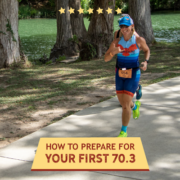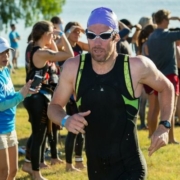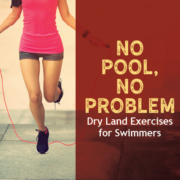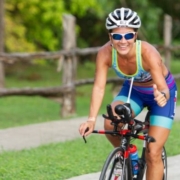How to Prepare for Your First 70.3 Distance Triathlon
Execute your plan for a successful first 70.3 distance triathlon
If you love shorter triathlons and are looking for a new challenge, then make your next goal a 70.3 distance triathlon. The 70.3, also known as half, stands for the total number of miles you’ll complete. This includes 1.2 miles swimming, 56 miles cycling, and 13.1 miles running. If all this sounds like a big challenge, don’t worry – successfully finishing a half distance triathlon is a very achievable goal. It’s the same thing you already do at other events. It’ll just take longer! How you approach this new-to-you distance will be different though. And we’re here to help you prepare for your first 70.3 distance triathlon.
-
Start small and gradually increase
Even if you’re a regular participant when it comes to triathlon, you’ll still need to build up your endurance and stamina. The first step to take for your first 70.3 distance triathlon is to register for the event and commit to your goal. Once that’s set, make smaller goals that’ll lead to your bigger goal. They’ll help keep you on track. Now it’s time to train!

Build your endurance by gradually increasing your distance.
Intense training is a great way to increase your stamina, but too much training can have an adverse effect on your body. Your body needs time to repair the tiny tears in your muscles that are a natural response to physical training. The right balance between training and rest days is crucial to building up your strength and endurance. For every four days that you work out, include a rest day to give your body the chance to heal. Utilize these tips when you’re ready to increase your running mileage.
-
Practice open water swimming
Knowing how to swim and be comfortable in open water is crucial to swimming 1.2 miles. Open water swim training can help you prepare for race day. In the right setting, you can also swim longer distances. This helps because you’ll need to increase your distance over time during training. Start slow and increase the time and distance you spend in open water. You can set your goals similar to what runners do, about a 10% increase in distance each week. This gradual increase helps with stamina and increases the chances you avoid physical fatigue on race day. If open water still bugs you out, this advice will help you become more comfortable.
-
Incorporate brick training

Brick workouts will help prepare you for your first 70.3 distance triathlon.
Brick training involves completing two types of exercises back to back with as little rest as possible in between. For triathletes, this is vital. Brick workouts include swim-to-bike, bike-to-run, or run-to-bike. While you won’t go from running to the bike on race day, this brick will still build endurance and stamina.
Implementing these workouts offer additional benefits. They’ll help you prepare for how transition will feel and what you’ll need. You’ll also get accustomed to how you’ll feel on race day with swim-to-bike and bike-to-run brick workouts. Learn more about brick workouts and check out the different workout examples.
-
Hydration and nutrition
Your body needs fuel to perform. For a 70.3, the right balance can make or break you during race day. The long-distance and multiple events you’ll have to compete in requires the right mix of nutrition and hydration. Simple sugars and a high-carb diet alone won’t sustain you through your training or during the event. At the same time, foods high in fat slow down digestion. You’ll also need to increase your sodium intake – between 1600-2500 mg depending on how much salt is in your sweat. Aim for a low-fat, low-fiber, and high-carb diet to power through the 70.3 triathlon event during race day. Test different hydrations and nutrition during training to discover what works best for you.
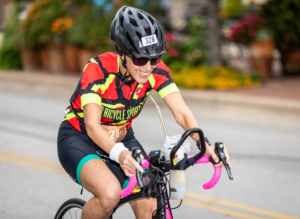
Discover what hydration and nutrition work for you during training.
Aim for at least 100 calories/hour for your race-day caloric intake. At the same time, consistently hydrating yourself is just as important. You need to compensate for the sweat you’ll lose during the event. Remember, just like shorter distances, nothing new on race day! Here’s a deeper breakdown of how to fuel during the race.
In addition to the above, you’ll need dedication, consistency, and hard work. All of these combined will help prepare you for your first 70.3 distance triathlon. Keep in mind, not should change from how you’ve trained for shorter distances. What will change is the amount of time needed to train for and complete the increased distances. Soon enough you’ll cross your first 70.3 distance finish line!

